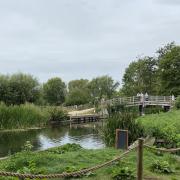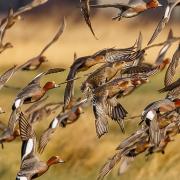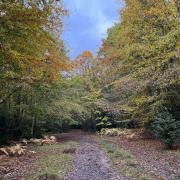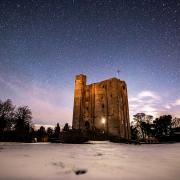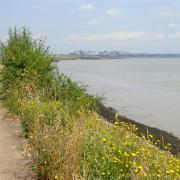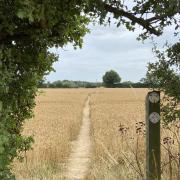Essex Wildlife Trust has been searching for Essex’s lost ponds. Read more about this county-wide project and how you can create your own pond – one of the best ways you can boost biodiversity where you live
Ponds are aquatic treasure troves. There’s little more exciting than clumps of jelly that hold little comma-shaped tadpoles, waiting to burst out of their cases and explore the world around them. Alongside this, great-crested newts reveal uniquely spotted yellow and amber underbellies, as they glide through the water. Keeping the water healthy, luscious wetland plants absorb nutrients, and provide a great food source for dabbling ducks that nibble upon them from the surface.
Historically, nearly every field in the countryside would have a pond. Today, however, ponds are not so commonplace. In the last 100 years, half a million ponds have been lost.

Where have all the ponds gone?
Mostly, ponds are lost through a lack of appropriate management, in which trees bordering the pond are allowed to grow too big. If they do, their roots can draw up so much water from the pond that the pond starts to drain and dry out. Excess leaf litter falling into the pond can lower the pH of the water, making it more acidic. Excessive tree growth can also overshade a pond, reducing light available for plant growth both on and under the surface.
Some ponds have been infilled due to changes in agricultural practices, particularly in the post-war period. As maximising agricultural efficiency became the name of the game, hedgerows between fields were ripped out to create larger arable spaces, and this hedgerow material was often then thrown into ponds. These in-filled ponds, often referred to as ‘ghost ponds’, can sometimes – though not always – be seen as waterlogged corners in arable fields.
What are we doing to help?
Fortunately, ponds are incredibly resilient, even if they have been lost. With the right management, ponds can bounce back quickly to a healthy ecological state. Essex Wildlife Trust is working with the RSPB and farmers throughout the county to restore lost ponds.
The first stage of this county-wide restoration project is finding out how many lost ponds we have in Essex. With the help of dedicated River Champion volunteers, 10,000 historic ponds have already been identified – and that’s just across half the county. You can find out more about this project on the Trust’s website essexwt.org.uk/recovering-lost-ponds

Make your own pond
Feeling inspired? One of the best ways of boosting biodiversity and attracting more wildlife to your garden is by creating a pond. As your pond springs to life, keep an eye out for the new wildlife you’ll attract. You may find birds drinking, bats swooping, damselflies and dragonflies hawking, frogs and toads croaking, frogspawn floating and pond plants emerging!
DIY pond checklist:
• Bucket/container/pot
• Pond liner
• Big stones
• Collected rainwater
• Pond plants
Follow our simple DIY on our website: essexwt.org.uk/actions/how-create-mini-pond




